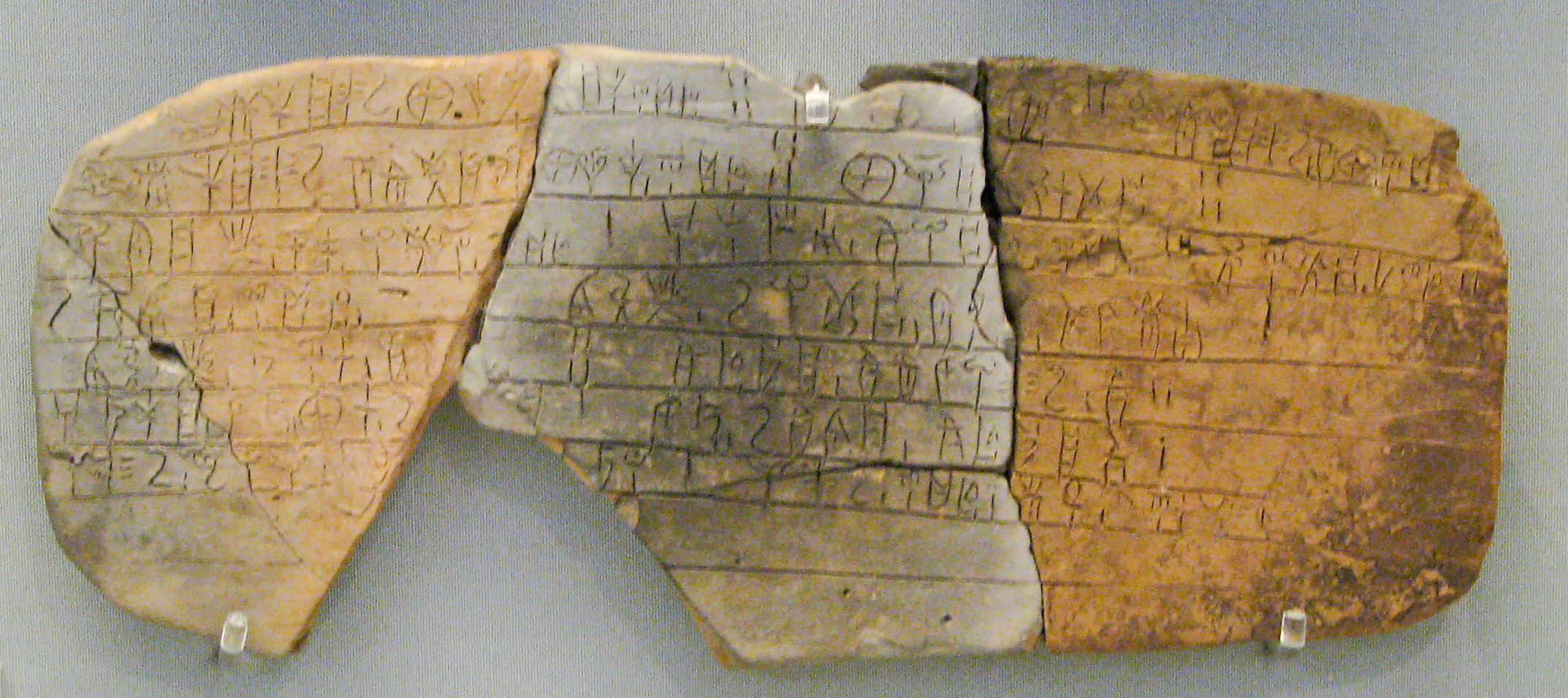70 Paragraphs
A paragraph is a unit of text—most likely several sentences in length but not always—that focuses on a particular idea or point. When we divide our writing into these units of text, we do so to break up the flow of information into manageable chunks, which in turn gives structure to how we present our ideas in writing. When you send multiple text messages back-to-back instead of sending one overly long text, you’re writing in paragraphs. When you compose a social media post and hit the spacebar to drop down a line, you’re writing in paragraphs. Whether we realize it or not, most of us write paragraphs every day, but few of us understand how these units of text came to be.
If you enjoy history, you might be interested to know that paragraphs have been around for longer than the invention of paper. Historian of rhetoric Richard Leo Enos posits that the earliest etchings or “scratch marks” around letters on Greek tablets denote early forms of the paragraph (46). In the infamous clay tablet that follows below, you can look closely to see where lines are drawn to break up the flow of ideas. Additionally, scholars now believe that the development of the paragraph derives from the ancient stage direction cue used at intermission, called the parabasis, or the moment at intermission when the chorus would come on stage to sing to the audience between acts (Enos 56). Although there aren’t any choir members hitting high notes between your paragraphs, your paragraphing (the action of breaking your writing up into paragraphs) will function similarly in providing the reader a moment to lay the ideas of the previous paragraph to rest before transitioning to new ideas in the next paragraph.

When to Paragraph
How do you know when “enough is enough”—when you have enough information in one paragraph and have to start a new one? A very rough guide is that you need more than one or two paragraphs per page of type. Paragraphing conventions online require even shorter paragraphs, with multiple short paragraphs on one screen.
It’s best to deal with paragraphs as part of the revision step in the writing process. Find places where the information shifts in focus, and put paragraph breaks in those places. You can do your best to paragraph as you draft but know you’ll address paragraphing more during the revision process.
Building Body Paragraphs
In academic writing, body paragraphs are any paragraphs that fall in the middle of the text. In other words, if it’s not the introduction or the conclusion paragraph, then it’s a body paragraph. Body paragraphs typically begin with a key sentence (also called a topic sentence) and are followed by one or more sentences that develop claims, paraphrase or directly quote from sources, and synthesize or provide analytical commentary on the evidence provided. At the end of the body paragraph, a concluding sentence wraps up the main point of the paragraph or segues on to the next paragraph.
For a quick guide to building a body paragraph, visit How to Write a Paragraph with Quotations in the Supplemental section.
Attribution
“Paragraphing and Transitioning,” Excelsior OWL, CC BY: Attribution, http://owl.excelsior.edu/writing-process/paragraphing/paragraphing-and-transitioning/.
